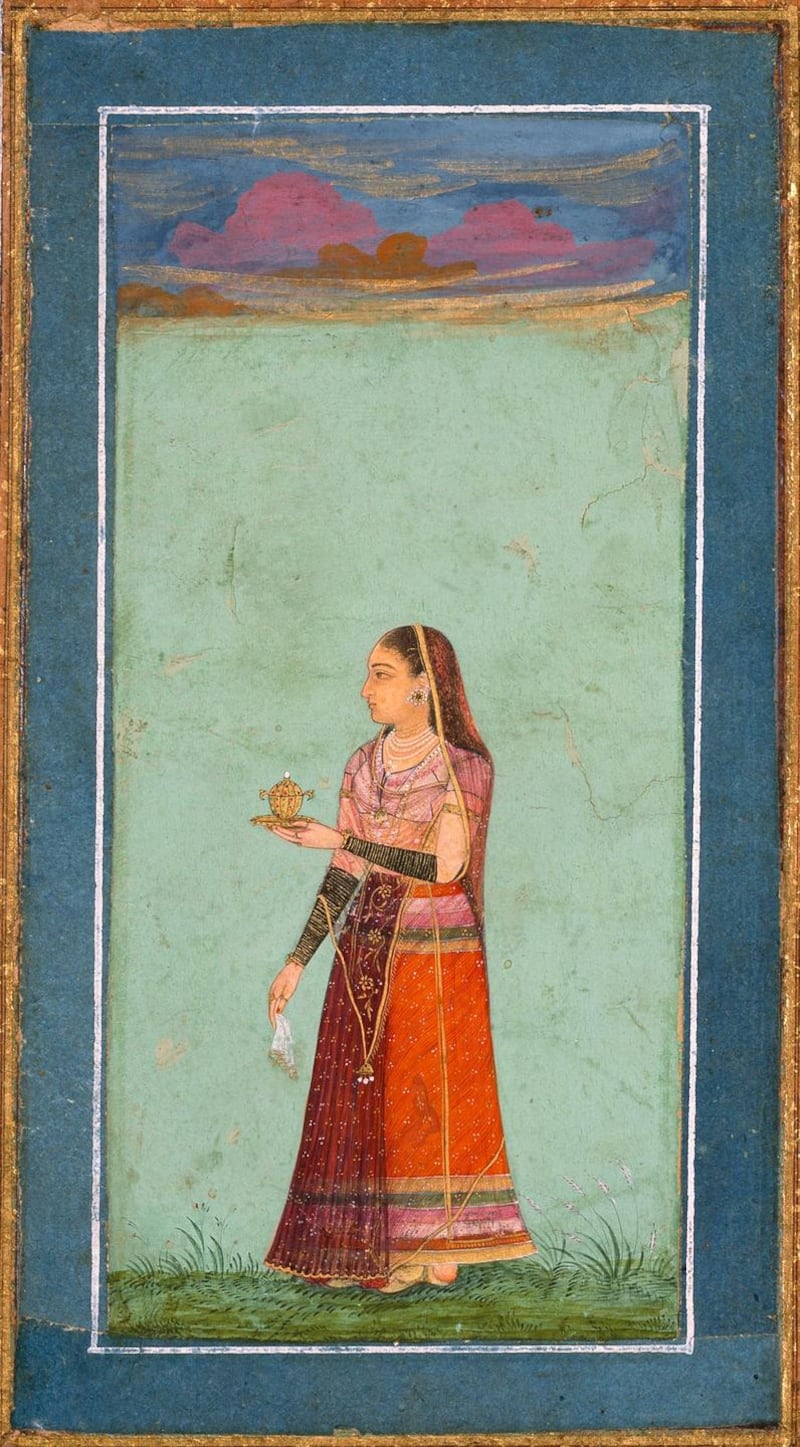What is it?
A Hindu woman with a covered cup is a Mughal miniature painting of a single, standing female figure. The elegant naturalism of the work is typical of Mughal painting, which developed from a mix of Persian and Indian precursors, in the courts of the Mughal emperors from the 16th century onwards. This example, by an unknown artist, is dated to c.1640. While a significant number of album paintings from that time feature individual figures, those figures are usually male, and it is relatively unusual to find one of a woman.
How was it done?
Mughal painting is distinguished by its accomplished realism in the depictions of people, costumes, animals and the natural world, to a degree never seen in Persian antecedents. Paintings were often made as illustrations for various kinds of texts, including literary and historical works, or as individual works gathered in albums. Among the dominant subjects are episodes in life at court, such as hunting scenes, diplomatic and other ceremonial occasions, military campaigns and battles, and exceptionally fine portraits. Artists emerged through family tradition and apprenticeship.

Where can I see it?
It is from the collection of the Chester Beatty Library. The library's holdings of Mughal miniatures are so extensive and significant that they form an indispensible part of the history of Mughal painting. And they account for just one area of the library's riches. Beatty was a mining magnate and philanthropist, and an avid collector. American by birth – he was born 1875 – he became a British citizen in 1933 and, after moving to Dublin in 1950, an Irish citizen in 1957. He left the library he established, at Shrewsbury Road, plus its stupendous collections to the Irish people when he died in 1968. The 50th anniversary of his death was January 19th, and the library is planning a series of special exhibitions this year (see cbl.ie)
Is it a typical work of the period?
It is not that typical in featuring a single female subject, but it displays the typical strengths of Mughal painting, from the finely drawn profile to the wealth of careful, naturalistic detail, not to mention the sensitive use of colour. Linda York Leach noted that the distinctive, melon-shaped cup the woman carries is a close match to vessels known to have been in use at court during the reigns of Jahangir and Shah Jahan.
Mughal painting is broad in its range, accommodating many influences and approaches, never becoming a set of formulaic conventions.
That is due in no small measure to Jahangir, son and successor to Akbar. By the time he inherited the throne, he was a very active patron. He favoured works by individual artists rather than anonymous, collaborative groups and he encouraged the influence of European realism in portraiture and other subjects. While the painter of this particular miniature is unknown, a large number of individual Mughal artists are known and documented in detail, and there are multiple examples of works by many of them in the Chester Beatty collection.













